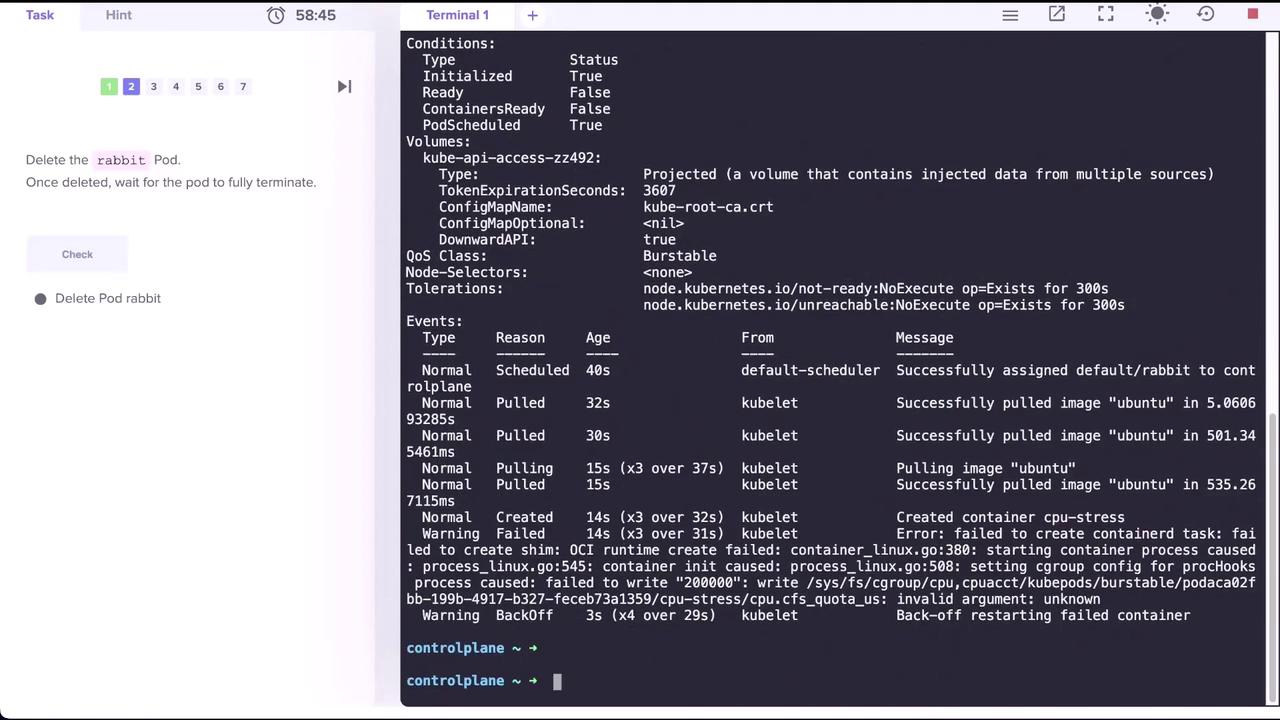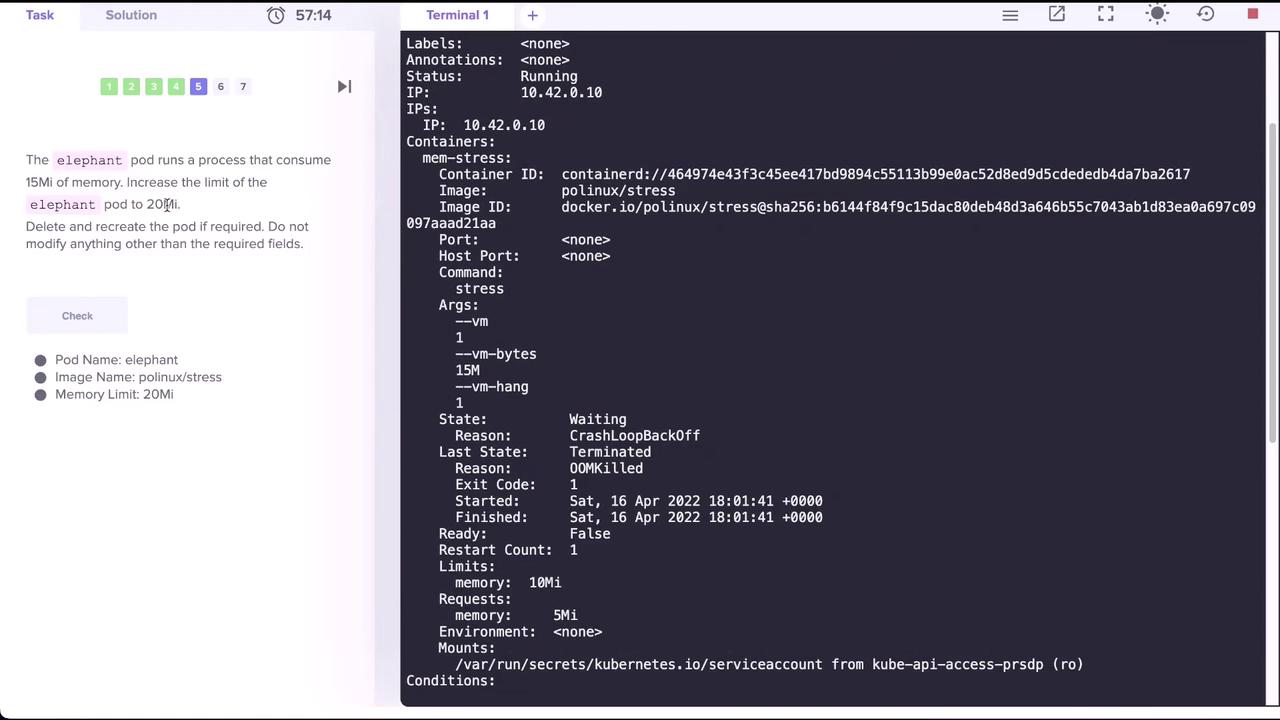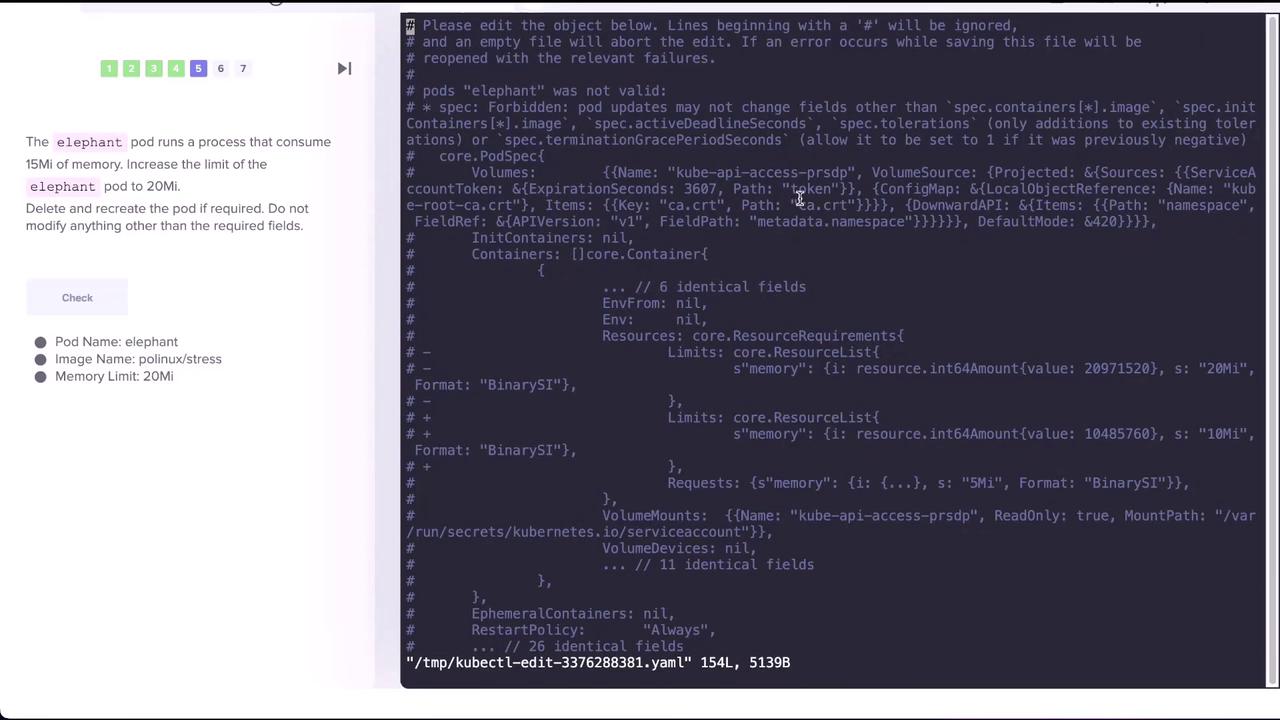Kubernetes and Cloud Native Security Associate (KCSA)
Kubernetes Security Fundamentals
Solution Resource Quotas Limits
In this guide, we demonstrate how Kubernetes enforces CPU and memory constraints using two example pods, rabbit and elephant. You will learn how to:
- Identify resource requests and limits
- Diagnose pod failures caused by insufficient resources
- Update pod specifications to prevent OOM kills
Pod "rabbit": Identifying CPU Requests
First, confirm that the rabbit pod is running and examine its resource settings:
kubectl get pod rabbit
kubectl describe pod rabbit
Excerpt from the description shows:
Containers:
cpu-stress:
Limits:
cpu: 2
Requests:
cpu: 1
Here, the rabbit pod requests 1 CPU and caps at 2 CPUs.
To clean up:
kubectl delete pod rabbit
# pod "rabbit" deleted

Pod "elephant": Diagnosing Memory Issues
When you deploy the elephant pod, it enters a CrashLoopBackOff:
kubectl get pods
NAME READY STATUS RESTARTS AGE
elephant 0/1 CrashLoopBackOff 1 8s
Inspect its status and events:
kubectl describe pod elephant
Key output sections:
Containers:
mem-stress:
State: Waiting
Reason: CrashLoopBackOff
Last State:
Terminated:
Reason: OOMKilled
Exit Code: 1
Limits:
memory: 10Mi
Requests:
memory: 5Mi
...
Events:
Type Reason Age From Message
Normal Scheduled 23s default-scheduler Successfully assigned default/elephant to controlplane
Normal Pulled 20s kubelet Successfully pulled image "polinux/stress"
Normal Started 18s kubelet Started container mem-stress
Normal Back-off 18s kubelet Back-off restarting failed container
The pod is OOMKilled because it exceeded its 10Mi memory limit while the stress workload uses around 15Mi.
Warning
The CrashLoopBackOff status indicates the container repeatedly failed due to out-of-memory errors. Always ensure your limits.memory exceed the actual usage of your application.

Updating the Memory Limit
You cannot patch resource limits on a running pod. Instead, edit the pod manifest and recreate it:
kubectl edit pod elephant
The YAML editor opens. Find the resources section and change:
spec:
containers:
- name: mem-stress
resources:
limits:
memory: 20Mi
requests:
memory: 5Mi
Save and exit. You’ll see an error because live edits to limits are not allowed:
error: pods "elephant" is invalid
A copy of your changes has been stored to "/tmp/kubectl-edit-*.yaml"
error: Edit cancelled, no valid changes were saved.
Apply the updated manifest by deleting and recreating the pod:
kubectl replace --force -f /tmp/kubectl-edit-*.yaml
Verify the new memory configuration:
kubectl describe pod elephant | grep -A3 "Limits:"
Expected output:
Limits:
memory: 20Mi
Requests:
memory: 5Mi
...
Ready: True

Resource Summary
| Pod | CPU Request | CPU Limit | Memory Request | Memory Limit |
|---|---|---|---|---|
| rabbit | 1 CPU | 2 CPU | – | – |
| elephant | – | – | 5Mi | 20Mi |
Clean Up
Remove the elephant pod to finish the exercise:
kubectl delete pod elephant
# pod "elephant" deleted
Further Reading
- Resource Management for Pods and Containers
- Kubernetes Official Documentation
- Understanding CrashLoopBackOff
Watch Video
Watch video content